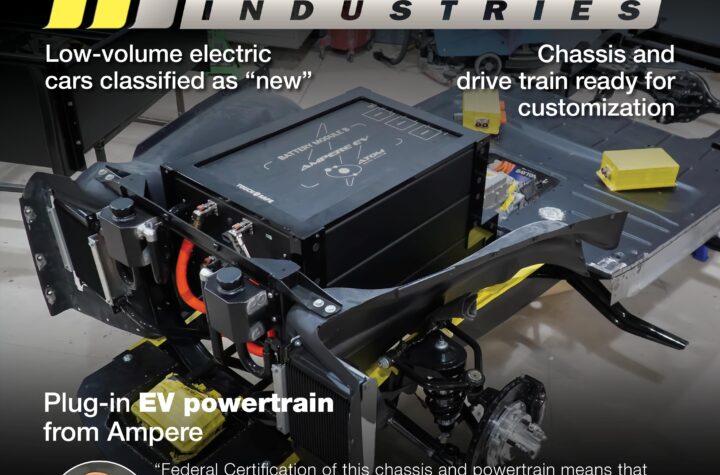
The Programmable Logic Controller, or using the less tongue-tieable acronym, PLC, has become a stalwart of the automation industry and can be found in countless automated manufacturing processes across the world.
PLCs find a home wherever there is a need to control devices, such as pneumatic machines, robots, traffic lights, hydraulic machines and packaging lines. Such heavy duty, essential machine-kit ought to be problem and troubleshooting free, no?
Well despite being a powerhouse of control systems, and widely becoming the device du jour for a wide variety of control tasks, the truth is the PLC is an iconic and integral component in industry with a whole host of responsibilities, functionalities and capabilities. By performing sequences of instructions such as timing, counting, storing memory, relaying logic and arithmetic computation, the PLC’s duties are crucial and imperative for the complex processes needed. So what possibly can go wrong?
The black box
There is a propensity amongst those unfamiliar with the PLC to fear the mysterious ‘black box’ when troubleshooting. This irrationality can be soothed though as PLCs are in fact easier to troubleshoot than old-school hard-wired control systems, with more open and easy diagnosis due to the black box.
Putting aside the traditional and universal signs of something going wrong, such as programme bugs and wiring errors, here we will explore the top five things that can go wrong with our beloved industry giant, the PLC.
1) I/O modules
Everyone generally assumes that when something goes wrong with a PLC, it is due to internal processor problems. Wrong!
A big percentage of problems are the result of I/O modules or field equipment. No need to panic either as it is not difficult to diagnose whether the problem is emanating from the I/O system or in the processor. Both types of problems have unique signatures allowing an even easier examination, and therefore conclusion.
2) In or out?
If the problem is traced back to a specific I/O module, this means that it is usually an external one, like the aforementioned wiring errors. If it is an internal problem, this could actually result in erratic behaviour, large groups of failures, or even total failure of the PLC system!
However, one of the first checks to do now is the ‘integrity’ of the PLC. This doesn’t mean questioning whether the PLC is a good, honest citizen with morals and a clean tax record, rather the integrity of the ground has to be electronically checked.
The power and ground wiring also needs to examined further, to ascertain whether its loose, corroded or has damaged connections. The power supply should be checked; using a digital meter and both AC/DC voltages should be zero.
3) Interference
Another problem for the PLC can be the effects of electromagnetic interference (EMI) or radio frequency interference (RFI). These can be related to lightning strikes, welding in the area or handheld radio transmitters. The handheld radios used by maintenance staff, emit powerful radio frequency radiation, disrupting and interfering with any unprotected electronic equipment. Improvements in shielding, grounding and power conditioning can combat any EMI or RFI problems.
4) Corrupted memory
Frequency interference, power and grounding are all problems that can disrupt and corrupt the PLC’s memory, so it is crucial to verify the program is still correct and comparable with a backup copy on tape, disk or in the cloud. As with all data backups, ensure they are up to date and kept away from our old enemies, EMI and RFI, along with high temperatures and humidity.
5) Confusion
When PLC troubleshooting, a major aim is to find out why the internal status of the PLC (what the PLC thinks is happening) is in conflict and not in agreement with the external situation (what is actually happening).
Our job is to determine the status of the relationship between physical I/O modules and I/O instructions in the PLC program. Different manufacturers have different solutions and schemes, usually a terminal, handheld unit or PC (not PLC). Either can be used to check the internal status of the input/output in question.
So, like most things in life, the PLC can be both advantageous and disadvantageous. Yes, there is and always will be a lot of work required in connecting wires, a difficulty with changes and replacements and potentially long hold up times when something does go wrong. And, when something does go wrong, the best advice is to choose a reliable partner, such as European Automation, that can source and deliver the correct part quickly and efficiently.
But rather like a stubborn grandfather there is something nostalgically pleasing and reassuring about the familiarity of the PLC. In today’s high technology world, sometimes it’s advisable to choose equipment or brands that are easily managed. Cost effective, flexible, reliable and with troubleshooting aids, the PLC has come a long way.
About European Automation: European Automation stocks and sells new, used, refurbished and obsolete industrial automation spares. Its global network of preferred partner warehouses, and wholly owned distribution centre’s, enables it to offer a unique service within the automation industry, spanning the entire globe. It provides worldwide express delivery on all products meaning it can supply any part, to any destination, at very short notice.















More Stories
ROHM’s PMICs for SoCs Adopted in Reference Designs for Telechips’ Next-Generation Cockpits
Southfield Classics utilizes Ampere EV engineering to become the first manufacturer to achieve Low Volume Vehicle Manufacturer Certification
Mosaic Click board from MIKROE delivers global coverage multi-band and multi-constellation tracking ability